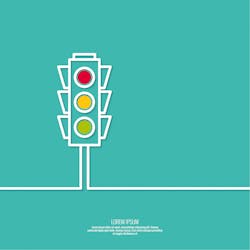There are 1.3 million transfers from skilled nursing facilities (SNFs) to emergency rooms each year, and CMS estimates that two-thirds of those are avoidable. The result is as much as $40 billion in unnecessary spending. Could telehealth be part of the solution?
That question led Timothy Peck, M.D., formerly chief resident in the Emergency Department at Beth Israel Deaconess/Harvard, to co-found a startup company, Call9, and become an advocate for legislation, the RUSH (Reducing Unnecessary Senior Hospitalizations) Act of 2018, to support reimbursement for connecting emergency physicians and SNFs.
Peck has spent considerable time studying the issue. “I didn’t know much about nursing homes when I started,” he said. “I went and lived in one for three months. I wound up sleeping on a cot in a conference room.”
Peck was trying to understand nursing home finances and operations and why the patients are being transferred. They usually have things like urinary tract infections or pneumonia, which could be treated in the outpatient setting, but the SNFs aren’t equipped with the right tools to be able to treat these patients. Those patients come in without their families and 43 percent have dementia, he said. “Most become delirious upon transfer. We don’t have much information about them so we order every test under the rainbow, driving up the bill unnecessarily. We put them in hallways. They get bedsores. We inevitably admit these patients for an average of $15,000 to $20,000 per admission.”
The two-thirds of transfers that are avoidable represent about $40 billion in unnecessary spending for something that harms patients,” he said. “We are spending money on hurting patients.”
Peck zeroed in on three operational issues:
• First, on average, nurse to patient ratios in nursing homes are 1 to 36. If one patient becomes acutely ill and spikes a fever, that nurse does not have time to take care of that patient when they have 35 other patients to take care of. Also, most nursing home nurses are trained to handle chronic care, not emergency or acute care. It is a mismatch of skills, not a people problem in any way, he said.
• Second, diagnostic equipment is sparse, and EKGs and lab tests take 24 hours to 48 hours to come back. That doesn’t work well for acute care.
• Third, physicians are not present in nursing homes. “When I was living in that nursing home and walking the halls weekends and nights, I never once saw another physician. Long-term care patients are seen once a month by their primary care doctors.”
Peck described the Call9 service: They embed 24x7 a paramedic or EMT or a nurse with emergency experience in the SNF. They go to the patient’s bedside and connect to a remote emergency physician who is available 24x7 and working from home. They can see a patient in nursing home A with a paramedic by the bedside and then jump to nursing home B and see a patient there with a first responder with them. “It makes the physician a scalable resource,” Peck said. “Believe it or not, they are our least expensive resource because they get scaled.”
Call9 has full integration with the three most commonly used EHRs in the SNF world. The solution also deploys a suite of mobile diagnostics and can return lab test results in a few minutes. It offers real-time telemetry and real-time ultrasound.
After treating a few thousand Medicare Advantage patients, he said the model has shown that it can save payers more than $8 million per nursing home per year. That allowed Call9 to get involved with Medicare shared savings value-based contracts with several payers nationally. But he notes that 60 percent of patients in nursing homes are Medicare patients. “We took that data to CMS and showed it to them,” Peck said. “The Ways and Means Committee in the House of Representatives got ahold of the data and got excited and started writing the Rush Act.” He stressed that Call9 is not the only organization creating a program like this. There are others working on similar solutions.
Peck said CMS is interested in using telehealth in this way, he said. “But they don’t have any way to change payment mechanisms in a quick manner. They would have to ask CMMI to run demos, which takes years. But Congress could pass new legislation.” He described the RUSH Act as creating a value-based shared savings arrangement with Medicare where 50 percent of the savings goes back to Medicare, and 37.5 percent goes to a company like Call9 or a physician group or medical staffing group that administers the program and 12.5 percent goes to the nursing home, aligning all stakeholders, he said. “The bill has been introduced by a bipartisan group, because it is a nonpartisan issue.” With time running out in this session, he said, the bill still has strong support among Democrats set to take over House leadership in 2019.
Besides bipartisan sponsors in Congress, the bill also has support from patient advocacy groups such as the Alzheimer’s Association, Michael J. Fox Foundation for Parkinson’s Research, American Heart Association, the National Alliance on Mental Illness, and the American Telemedicine Association. “They are saying that the patients need it; the taxpayers benefit; why are we not doing this?” Peck said.
As someone who has seen family members and friends make that repeated, disruptive round trip from nursing home to emergency room, I concur.


